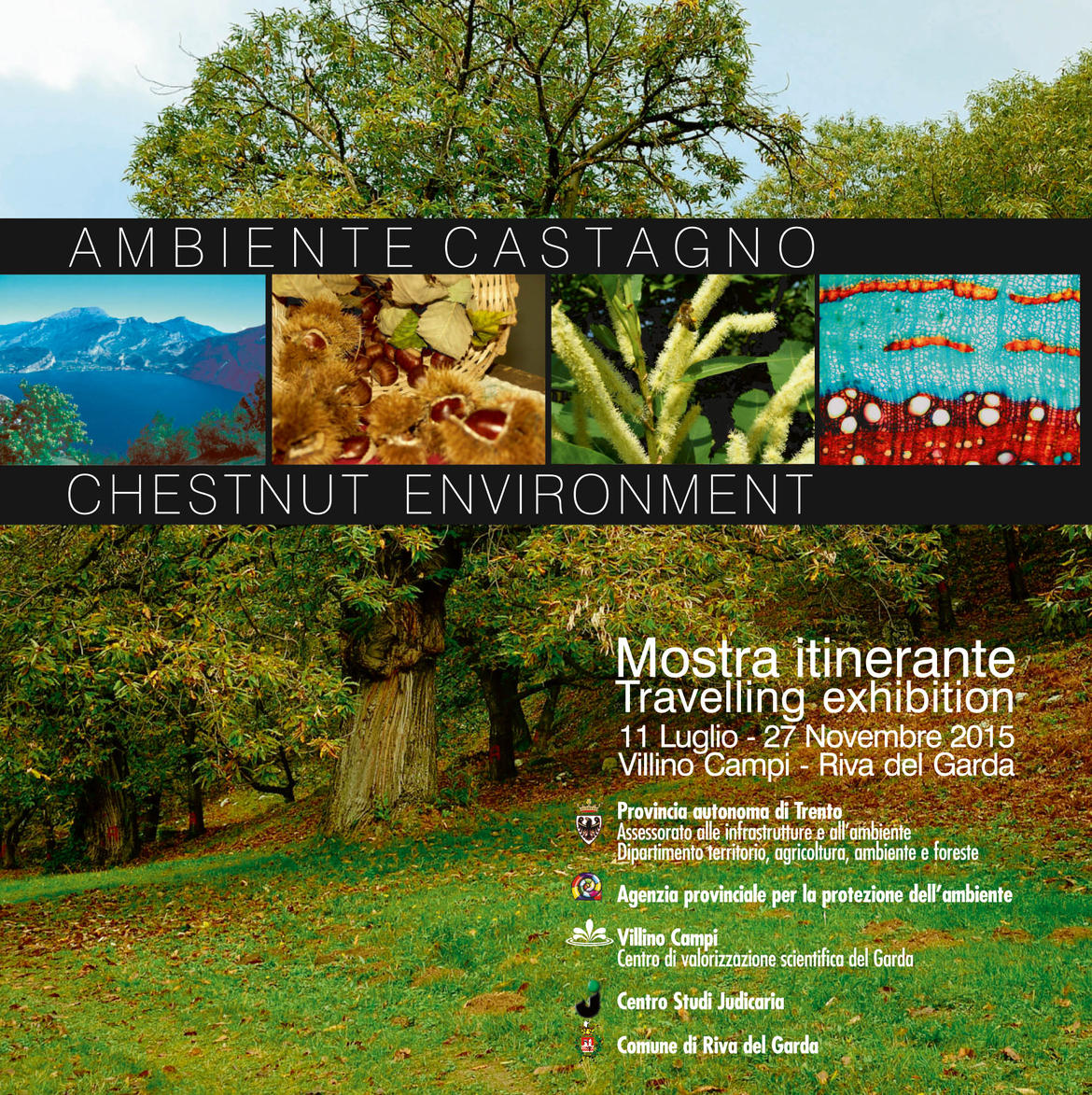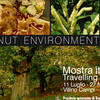Chestnut environment
The exhibition aims at highlighting the sustainability of this traditional culture which is limited in Trentino to a few areas characterized by a particular soil, and precisely because of its fragility deserves to be better known, protected and encouraged.

The cultivation of chestnut is perhaps more important for its natural landscape and its history than the dimensions of production, which are actually quite small: just remember that in the community of Campi, in the territory of Riva del Garda, less than 1500 plants have been recently catalogued.
The chestnut tree is here presented in its different aspects, starting from the ground, the undergrowth, the landscape and from its biodiversity:
- habitat tree, for its ability to accommodate a multitude of living organisms, in and out, above and below;
- cosmic tree, connection axis between the underground world, earth and the sky, symbol of the “Mother” in the ancient pagan worships;
- tree of the bread, fulcrum on which in ancient times the entire life of mountain communities was rotating, especially on the Apennines, in which forests this tree thrived luxuriant.
In the ten information panels essential topics such as Phytopathology are thematically analysed, through images of pathogens which in the last years strongly threaten the production of typical chestnuts, and the methods of biological control.
Here is also presented the topic of carbon sequestration and the positive role that the cultivation of the chestnut can play in mitigating the effects of climate change.
The exhibition also presents the use of the chestnut tree in all its parts, the therapeutic and nutritional characteristics, its importance in literature and in the visual arts, its history in Riva del Garda, the chemical composition of its flour, the recipes.
Five interactive exhibits were created, which allow a playful and sensorial approach to topics that may turn out to be complicated:
- "Carbon Sequestration": a three-dimensional puzzle to build molecules of glucose and cellulose by proceeding from CO2 and H2O molecules;
- "The Carbon pinball": a spring device through which an user can launch an atom of Carbon to two possible scenarios, one wrong and one “virtuous”;
- "Honey in comparison": it allows you to smell honey of the chestnut, acacia and millefiori;
- "Arboreal Biodiversity": you can touch the wood of different trees and shrubs, that form the vegetation of chestnut.
The exhibition is completed by a diorama and a reconstruction, small but charming, of the natural environment with the most significant animals and three different types of soil, AV clips, typical local products, preparations for microscopical observations;
For children has been created an hedgehog-shaped "soft corner".
The structures of the exhibition's outfitting recall the shape of leaves and fruits of chestnut and are made of recyclable material such as cardboard.
Source: www.gardatrentino.it
Promoting organizations:
Autonomous province of Trento
Assessorato alle infrastrutture e all'ambiente
Dipartimento territorio, agricoltura, ambiente e foreste
Agenzia provinciale per la protezione dell'ambiente
Villino Campi
Centro Studi Judicaria
Comune di Riva del Garda
In collaboration with:
Ufficio per le produzioni biologiche Provincia autonoma di Trento
Fondazione Edmund Mach
Associazione Tutela Marroni e Prodotti Tipici di Campi
Cooperativa Castanicoltori del Trentino Alto Adige s.c.a.
Gruppo Amici dell'Arte di Riva del Garda
Società di Scienze Naturali del Trentino
MAG Museo Alto Garda
Ingarda Trentino Azienda per il Turismo S.p.A. Riva del Garda
MUSE - Science museum, Trento
organization: APPA Agenzia provinciale per la protezione dell'ambiente



